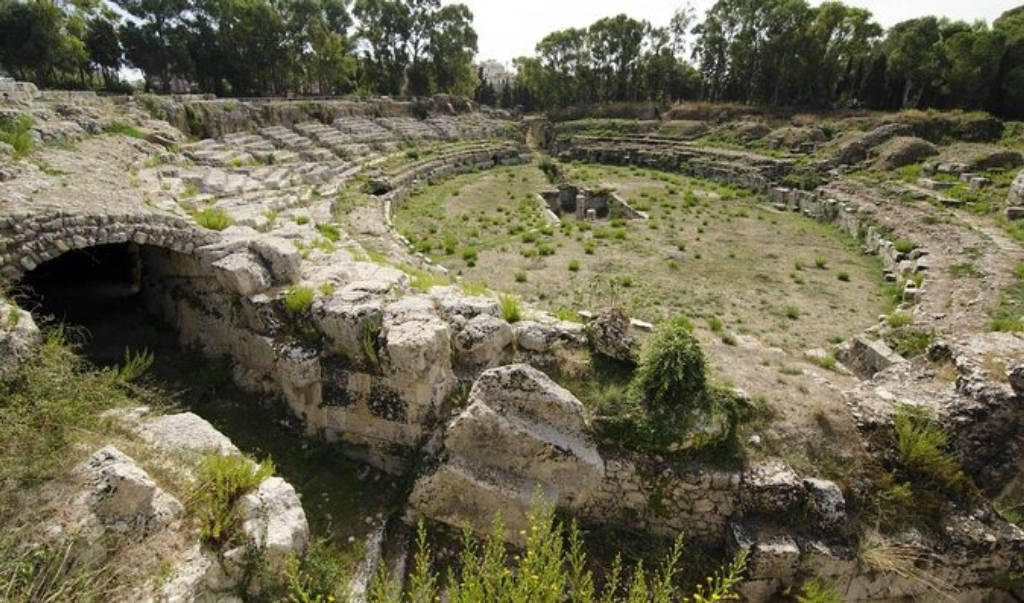Công viên Khảo cổ học của Neapolis, nằm ở phía tây bắc của thành phố hiện đại, có diện tích khoảng 240.000 mét vuông, là một công trình kỳ vĩ đặc biệt của lịch sử Syracuse cổ đại, thu hút rất nhiều khách du lịch tới thăm quan.
Công viên khảo cổ này là kết quả của một công việc bảo vệ lâu dài và khó khăn trong những năm 1950, không chỉ là công trình đồ sộ nhất của thành phố, mà còn chứa một loạt các chứng tích dày đặc từ nhiều thời đại khác nhau, từ thời tiền sử đến cổ đại và thời kỳ Byzantine. Công viên kéo dài trên một dải rộng lớn của sườn phía nam của cao nguyên Epipolis; tâm điểm là ngọn đồi tên Teminite.
Đối với những người theo chủ nghĩa cổ điển, công viên khảo cổ này là một điểm đến vô cùng hấp dẫn, nơi có viên ngọc trai Teatro Greco. Được xây dựng vào thế kỷ thứ 5 trước Công nguyên và được xây dựng lại vào thế kỷ thứ 3, nhà hát này có sức chứa 16.000 người. Bên cạnh nhà hát là Latomia del Paradiso bí ẩn, một mỏ đá vôi sâu với rất nhiều vách đá, nơi cung cấp đá cho thành phố cổ đại. Được bao phủ bởi những hầm mộ và những loài cây họ cam quýt cùng với mộc lan, đây cũng là nơi giam cầm 7000 người sống sót sau cuộc chiến giữa Syracuse và Athens vào năm 413 trước Công nguyên. Ngoài ra công viên còn có Orecchio di Dionisio, một hang động cao 23m, kéo dài 65m tính từ vách đá, được Caravaggio đặt tên theo tên bạo chúa Dionysius, người được cho là đã sử dụng âm thanh gần như hoàn hảo của mỏ đá để nghe trộm tù nhân của mình.
Trở lại bên ngoài khu vực này, bạn sẽ tìm thấy lối vào Anfiteatro Romano, được xây dựng từ thế kỷ thứ 2, ban đầu được sử dụng cho các trận đấu võ sĩ giác đấu và các cuộc đua ngựa. Người Tây Ban Nha, ít quan tâm đến khảo cổ học, đã phá hủy phần lớn địa điểm này vào thế kỷ 16, sử dụng nó như một mỏ đá để xây dựng các bức tường thành của Ortygia. Phía tây của nhà hát là Ara di Gerone II từ thế kỷ thứ 3 trước Công nguyên, là một bàn thờ hiến tế nguyên khối cho Hieron II, nơi có thể giết tới 450 con bò cùng một lúc.
Để đến công viên, du khách có thể đi xe buýt từ Molo Sant'Antonio hoặc đi tàu. Ngoài ra, đi bộ từ Ortygia sẽ mất khoảng 30 phút. Có hai văn phòng bán vé: một văn phòng nằm gần góc Via Cavallari và Viale Augusto, đối diện với địa điểm chính, và cửa hàng thứ hai nằm dưới con đường dẫn đến khu di tích. Những người muốn nghỉ ngơi sẽ tìm thấy một quán cà phê giữa phòng vé thứ hai và Anfiteatro Romano.



 Via del Teatro, 96100 Siracusa SR, Italy
Via del Teatro, 96100 Siracusa SR, Italy